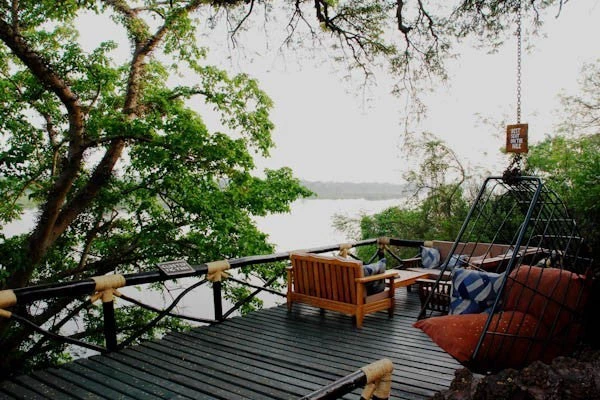Ecosystem: A complex of living organisms, their physical environment, and all their interrelationships in a particular unit of space.
Tourism: A social, cultural and economic phenomenon that entails the movement of people to countries or places outside their usual environment for personal, business or professional purposes.
I was part of a tourism ecosystem, once, when I built and operated a small lodge on the banks of the Nile in Uganda. While I was living in a tent in the bush building the lodge, life was simple: My little ecosystem was the land around the lodge and the tribulations of fending off monkeys and snakes by day and leopards, hippos, elephants and mosquitoes at night. The sun and rain beat down hard, and tools and workers broke down regularly. The generator was a particular pain in the neck.
Apart from supplies coming in, I was not really connected to the outside world. Money ran out for awhile and I had to rush to Kampala and persuade the bank give me a bigger overdraft (at 26 percent interest – thieves!).
Once the lodge was finished, I had to join another ecosystem: the world of registering the company, getting licenses, drawing up employment contracts, getting a bank overdraft, getting a tax ID number – all the elements of the enabling environment for me to do business. Then I had to join another one: I needed bums on beds, and I had to link my wonderful product to local markets; I had to develop promotional materials and packages; I had to interact and contract with tour operators and local travel agents to supply me business; I needed market access.
Nile Safari Camp: home for two years
Then, guess what? My business plan wasn’t panning out. I didn’t get the occupancies or the rates that I projected from the local market. I had to step into yet another ecosystem: the world of international long-haul travel. I needed more and better-paying customers. I had to understand how the big international tour operators sold their product, what they were looking for in new product and how they contracted. I had to join another ecosystem to make that happen. Turns out my little product wasn’t enough to attract international customers on its own, I had to team up with other lodges and offer a fuller package; we had to cluster our products. I had to diversify and innovate and find ways to add value to my accommodation offer – birdwatching, fishing, guided walks, weddings and honeymoons, meetings and workshops. . . . Well, there are whole ecosystems around each of those market segments. You need to understand them before you can do business with them.
Fast forward 20 years, and I find myself constantly drawing on those early experiences to understand the challenges of developing a tourism sector in any destination. Visualizing those challenges as part of multiple overlaying ecosystems that concern living, breathing, thinking and constantly interacting parts is critical to seeing the big picture. Tourists move around; they use local transport and roads; they pass through urban spaces; they visit historical and cultural sites and natural areas; they talk to people, interact with local businesses, stop to admire a view, watch animals and birds; they fly, swim, bike, walk, eat, drink, sleep; they shop, attend events, watch sports, go to shows, visit museums; they “do” and “experience” pretty much the same as local residents, and a lot more. Almost every experience a tourist has is an interaction with an ecosystem.
Tourists pass through and life goes on. The kicker is that, while they pass through, they leave money behind. They willingly, even happily, part with their hard-earned cash in exchange for a service or a good provided by a local person. It can be an amazingly efficient and painless system for transferring wealth. It’s compellingly pro-poor.
Each of these boxes (below) represents a whole set of players on the supply side who need to come together to contribute to the greater tourism ecosystem in any destination. If one or two boxes are not working, the whole system is in trouble.




Join the Conversation